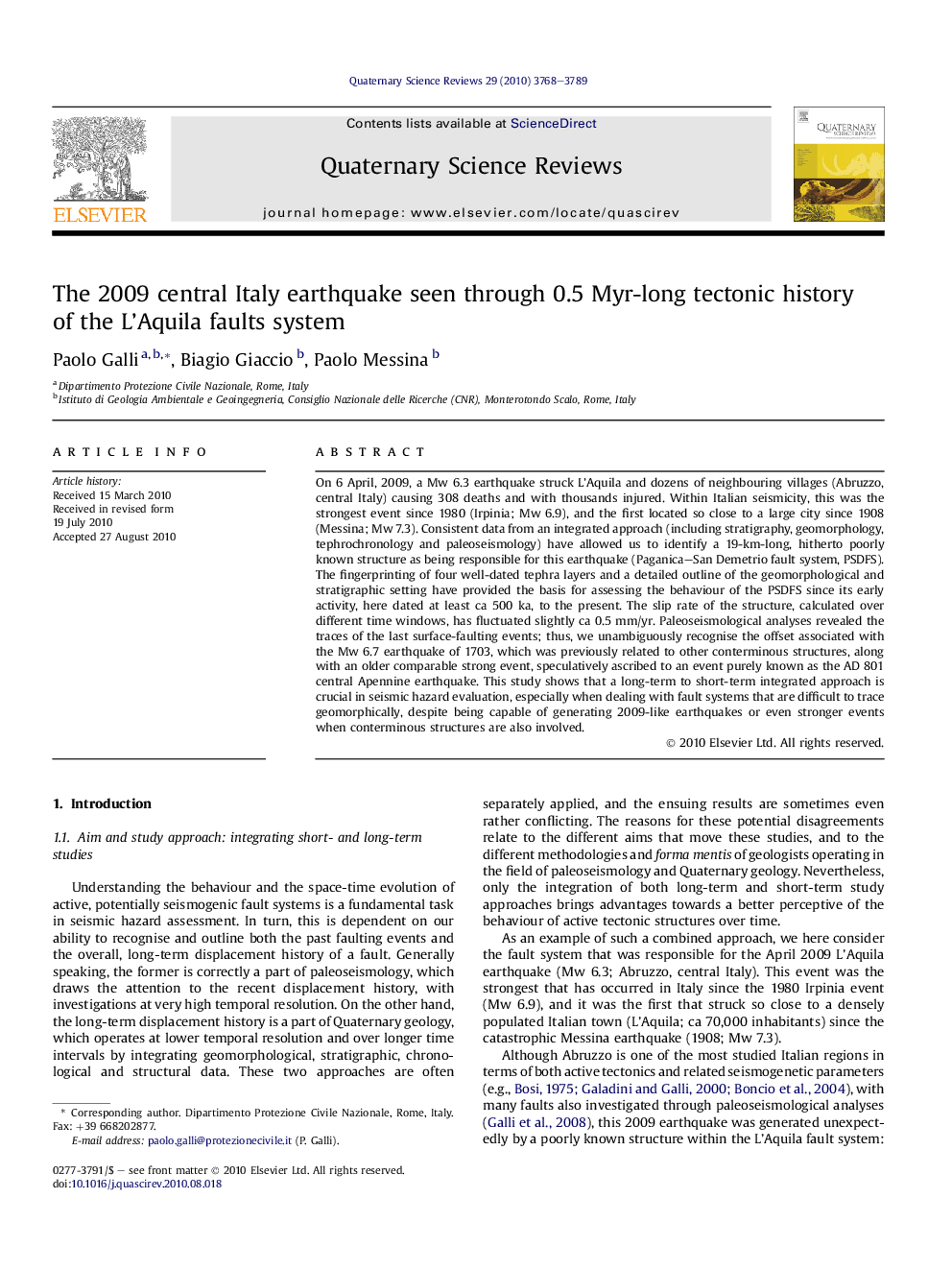| Article ID | Journal | Published Year | Pages | File Type |
|---|---|---|---|---|
| 4737130 | Quaternary Science Reviews | 2010 | 22 Pages |
Abstract
On 6 April, 2009, a Mw 6.3 earthquake struck L'Aquila and dozens of neighbouring villages (Abruzzo, central Italy) causing 308 deaths and with thousands injured. Within Italian seismicity, this was the strongest event since 1980 (Irpinia; Mw 6.9), and the first located so close to a large city since 1908 (Messina; Mw 7.3). Consistent data from an integrated approach (including stratigraphy, geomorphology, tephrochronology and paleoseismology) have allowed us to identify a 19-km-long, hitherto poorly known structure as being responsible for this earthquake (Paganica-San Demetrio fault system, PSDFS). The fingerprinting of four well-dated tephra layers and a detailed outline of the geomorphological and stratigraphic setting have provided the basis for assessing the behaviour of the PSDFS since its early activity, here dated at least ca 500Â ka, to the present. The slip rate of the structure, calculated over different time windows, has fluctuated slightly ca 0.5Â mm/yr. Paleoseismological analyses revealed the traces of the last surface-faulting events; thus, we unambiguously recognise the offset associated with the Mw 6.7 earthquake of 1703, which was previously related to other conterminous structures, along with an older comparable strong event, speculatively ascribed to an event purely known as the AD 801 central Apennine earthquake. This study shows that a long-term to short-term integrated approach is crucial in seismic hazard evaluation, especially when dealing with fault systems that are difficult to trace geomorphically, despite being capable of generating 2009-like earthquakes or even stronger events when conterminous structures are also involved.
Related Topics
Physical Sciences and Engineering
Earth and Planetary Sciences
Geology
Authors
Paolo Galli, Biagio Giaccio, Paolo Messina,
